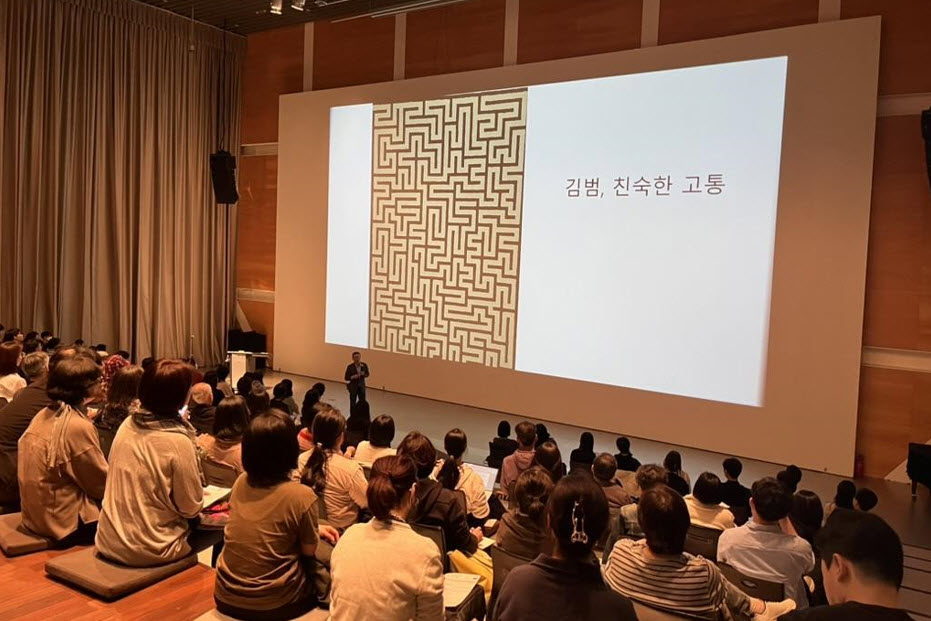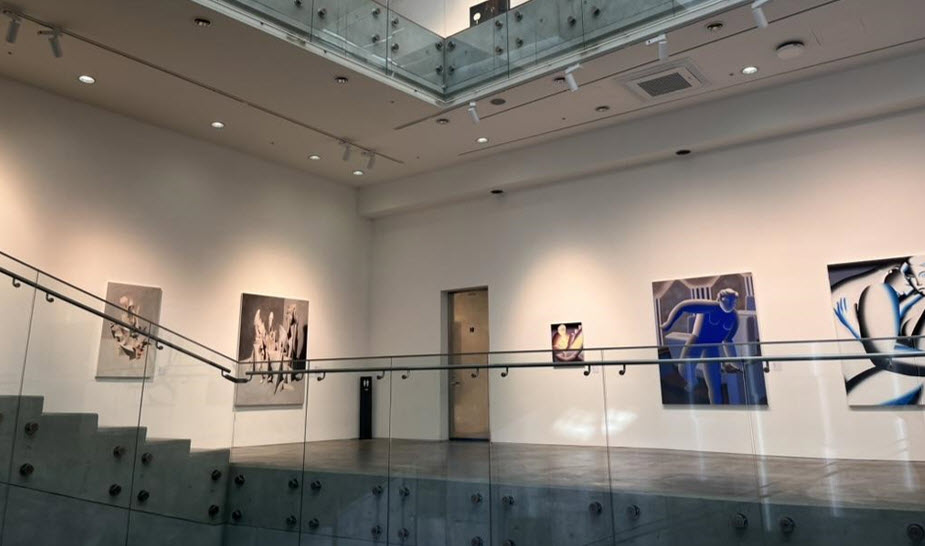On October 20, Seoul National University Museum of Art hosted a lecture about its exhibition: Memory Beneath the Ego, Fantasy Above the Ego. The museum auditorium was packed for the lectures by Professor Kim, Young-Min (Department of Political Science and International Relations) and art critic Soyeon Ahn.

Professor Kim spoke on stage about the importance of interpretation.
Professor Kim focused his lecture on establishing the importance of interpretation in our lives. Referencing Karl Marx’s famous quotation, “Philosophers have only interpreted the world, in various ways. The point, however, is to change it,” he introduced a different approach to the quote. “People have changed the world in various ways. The inevitable, however, is interpreting it,” he said. He emphasized that humans are inherently interpretive beings, and that if there is a purpose to changing the world, it is to interpret it better.
To illustrate how interpretation constructs and sustains our existence, he referred to works such as the Hungarian movie, The Turin Horse, or novels by Milan Kundera, bringing up examples of objects or scenes that gain specific meaning after the interpretation of an individual. According to Kim, all our desires, and the endeavors to realize them, are based on how we interpret the world as he noted, “consciously or unconsciously, explicitly or implicitly, we are always interpreting life.” “Just as it is impossible for our eyes to see nothing when they are open, it is impossible for our brain to think nothing when awake.”
In this context, Kim defined art as a product of wanting to interpret something in a certain way. Michel de Certeau famously separated “space” from “place” in this way. Space is how the physical place is experienced fluidly in the element of time. Thus, “space” becomes “place” when experienced and interpreted by an agent. Kim brings up the writing of Korean artist Kim Beom, known for his artwork, Intimate Suffering, to demonstrate how the concept of “hometown” can thus be redefined through art. In his book, Kim Beom writes of a fictional hometown in hopes of it functioning as a hometown for those who do not have one. Kim praised the reinterpretation of the concept of “hometown,” commenting on how true comradery comes not from coming from the same town, but from sharing the same fiction. As persuasive power of art comes from how it is fabricated out of our needs, life and art cannot be regarded as a dichotomy. He lamented how we often separate our everyday lives–going to school and working–from art, when in fact, we do not have to give up one for the other.

SNU MoA’s exhibition, Memory Beneath the Ego, Fantasy Above the Ego
The second half of the lecture welcomed art critic Soyeon Ahn to the stage. Titled Between Imitation and Unreality, her presentation began by briefly introducing the contemporary Korean art scene. Just a decade ago, artists faced new challenges due to the major national economic crisis, which brought on the recession of the art market, thus inflicting major changes and waves within the art scene in Korea. These waves included the flexibility of new media, reflections of the university as an institution, and the effects of digital images on the potential of painting.
New technology, Ahn explained, has put the current generation at the center of high-tech media. Moving images are being incorporated into frames, along with the element of time, and we now have various platforms that haze the difference between consumption and production. This directly affects the concept of “images,” as we are presented with a new type of audience, in other words, a new agency of the spectator.
She also mentioned how newer artists are breaking out of the institutions that they have previously been affiliated with. “Before, the school you belonged to, as well as its system, made up a very large part of your artistic identity. These days, artists are playing with the boundaries that this places them in,” she said. She provided examples of experimental projects that explore these institutional boundaries, such as the Free Home exhibition held at an abandoned space on the Hongik University College of Art campus.
Lastly, speaking of the powers of digital images, she touched upon the idea of reality and fantasy that new media art evokes. She noted, “the images exist in reality, but they depict things that do not make any sense, things we cannot know the origins of, raising the questions of whether we have to see dysfunctional, neglected objects as real.” Google’s DeepDream, for example, provides an opportunity to mix and match disparate and alien substances to create unreal images. According to Ahn, digital images shift the dominant notions of surfaces, paintings, distances and directionality, and the spectrum of art will continue to be extended in this way.
Written by Minjoo Lee, SNU English Editor, mjl1018@snu.ac.kr

